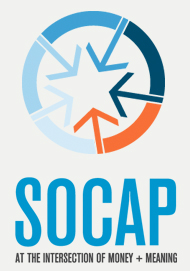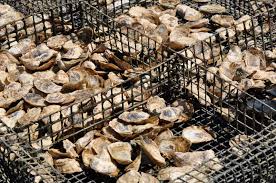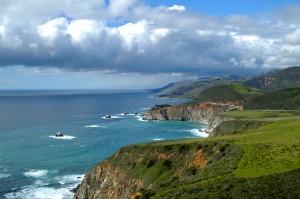 Successful projects, dwindling funds. What’s an innovative NGO to do?
Successful projects, dwindling funds. What’s an innovative NGO to do?
One answer: Build a deal pipeline for impact investors looking for investable ventures.
WorldFish, a Malaysia-based spinoff of the the “green revolution” pioneer CGIAR (Consultative Group on International Agricultural Research), reached this crossroads in 2010. International aid had run out for aquaculture initiatives that had helped coastal communities in Aceh, Indonesia rebuild their livelihoods after the 2004 tsunami.
WorldFish had advised the Indonesian fish farmers on raising milkfish, tilapia, and cash crops like shrimp and lobster. The new farming practices increased efficiency, reduced waste and raised the profits of the smallholder farmers. Starting with 47 farmers, the program had grown to more than 2,600 by 2010.
With production established, WorldFish organized a co-op to secure access to markets and credit and enable farmers to buy feed and other supplies in bulk. Participating Aceh farmers increased their annual income from $215 in 2007 to $684 in 2010 and 96 percent were operating at a profit — up from 28 percent, according to a WorldFish report.
Then the funding from Sweden’s aid agency and the UN’s Food and Agriculture Organization ran out.
Enter WorldFish Incubator, which is aiming to transform projects that aid smallholder fish farms into viable businesses. The incubator plans to deliver to investors at least 12 investable deals, worth more than $10 million, by 2016. After an investment period of about five years, WorldFish expects the investments to generate attractive returns, increased well-being for more than 200,000 people, along with environmental benefits and valuable lessons for impact investors in aquaculture.
“We’ve run out of project funding, but there’s no need to depend on grant-type funding,” says Malcolm Beveridge, WorldFish’s director of aquaculture and genetics. “We’re beginning to see ideas that have commercial potential.”
WorldFish has started incubator activites with seed funding from the Resources Legacy Fund. It needs further financing for full operation, has already begun to source deals for aquaculture investors. For example, it has suggested a milkfish project raising in India to Aqua-Spark, a new fund based in the Netherlands that is looking to invest in socially and environmentally responsible fish businesses, particularly in the developing world.
Investor interest in aquaculture has been hindered by a shortage of investable ventures, and WorldFish is riding powerful trends. As wild stocks decline, nearly half of the world’s fish consumption is now supplied by fish farming. Aquaculture is the world’s fastest growing food system — it’s now bigger than beef production — and delivered 63 million tons of food fish in 2011.
Two major challenges hinder aquaculture’s ability to reach its full potential. Small and medium-sized aquaculture enterprises, have found it difficult to access the capital they need to scale up. And fish farming has historically generated a host of environmental problems.
WorldFish’s research suggests that supporting such smallholder fish farmers offers the best opportunity for both reducing aquaculture’s ecological footprint and generating sustainable food and livelihoods. In addition to the work in Aceh, WorldFish’s grant-funded projects include working with the marginalized Adivasi community in Bangladesh and smallholder fish farmers in Malawi. It developed more productive strains of farmed tilapia, aquaculture systems integrated with other agricultural activities and new lower-impact pond technologies.
With technical assistance and business planning, WorldFish believes it can help elevate pioneering aquaculture businesses to commercial performance — and make them appealing to values-aligned, patient-capital investors.
How will WorldFish “green” aquaculture? Waste-mitigating practices developed in Aceh as well as in India and Bangladesh include altering consumption habits to favor smaller fish, changing feedstocks and creating a network of environmentally-sustainable supporting services. “We want to help ecosystems, not trash them. We don’t want to introduce strange species or wasteful feeds,” says Wayne Rogers, WorldFish’s Director of Corporate Services.
Rogers believes that many of the polluting and problematic aspects of aquaculture can be prevented or addressed by a series of interventions. When farmers are taught to screen fry (baby fish) before stocking ponds, for example, diseases among the fish are reduced, as is the need to use pharmaceuticals to keep them healthy.
More innovative interventions include rethinking the size of harvested fish for sale. Fish sold at finger-size save farmers rearing costs, increase the number of harvests, decrease the chances of disease developing, and increase nutrition. (Small fish are likely to be eaten whole, instead of filleted, discarding the head, eyes, and other nutritious parts.)
WorldFish also seeks to incubate ventures that create new feeds based on algae or tunicates (small, sedentary, plant-like organisms). Such feed would replace the use of forage fish as feed, reducing the practice, as Rogers puts it, of “scooping up lots of little fish off the coast of someplace like Chile and flying them across the world to grind up and feed them to farmed fish.”
WorldFish’s incubator plans to share such learning among investors, government and all parts of the fish supply chain in order to catalyze investment in small and medium aquaculture investments. “The idea,” Rogers says, “is to create business ecosystems that build community support and wealth.”
 This article from ImpactIQ is part of a series on Oceans and Sustainable Fisheries, in association with SOCAP 13, the Social Capital Markets conference in San Francisco, Sept. 3-6.
This article from ImpactIQ is part of a series on Oceans and Sustainable Fisheries, in association with SOCAP 13, the Social Capital Markets conference in San Francisco, Sept. 3-6.





